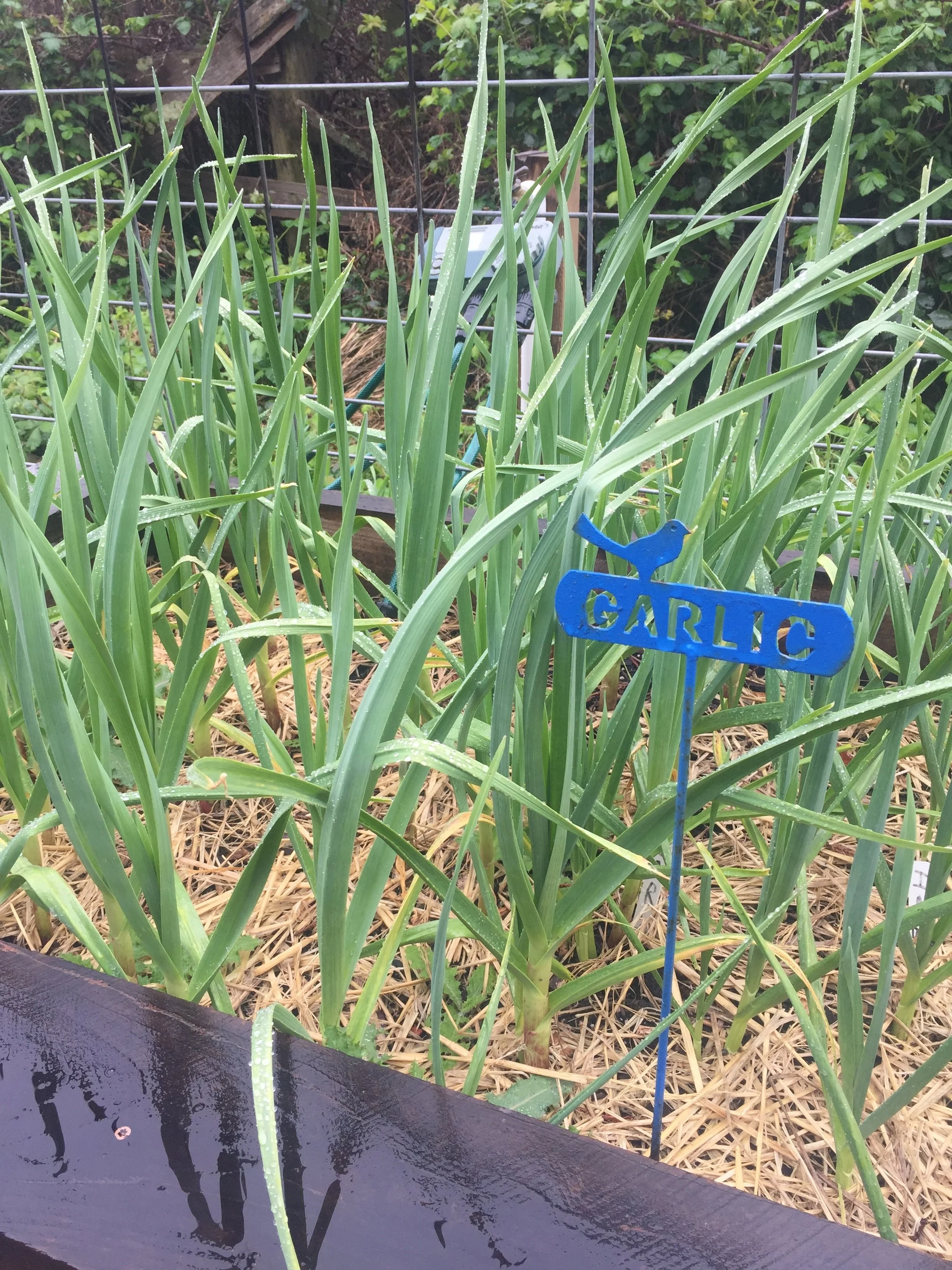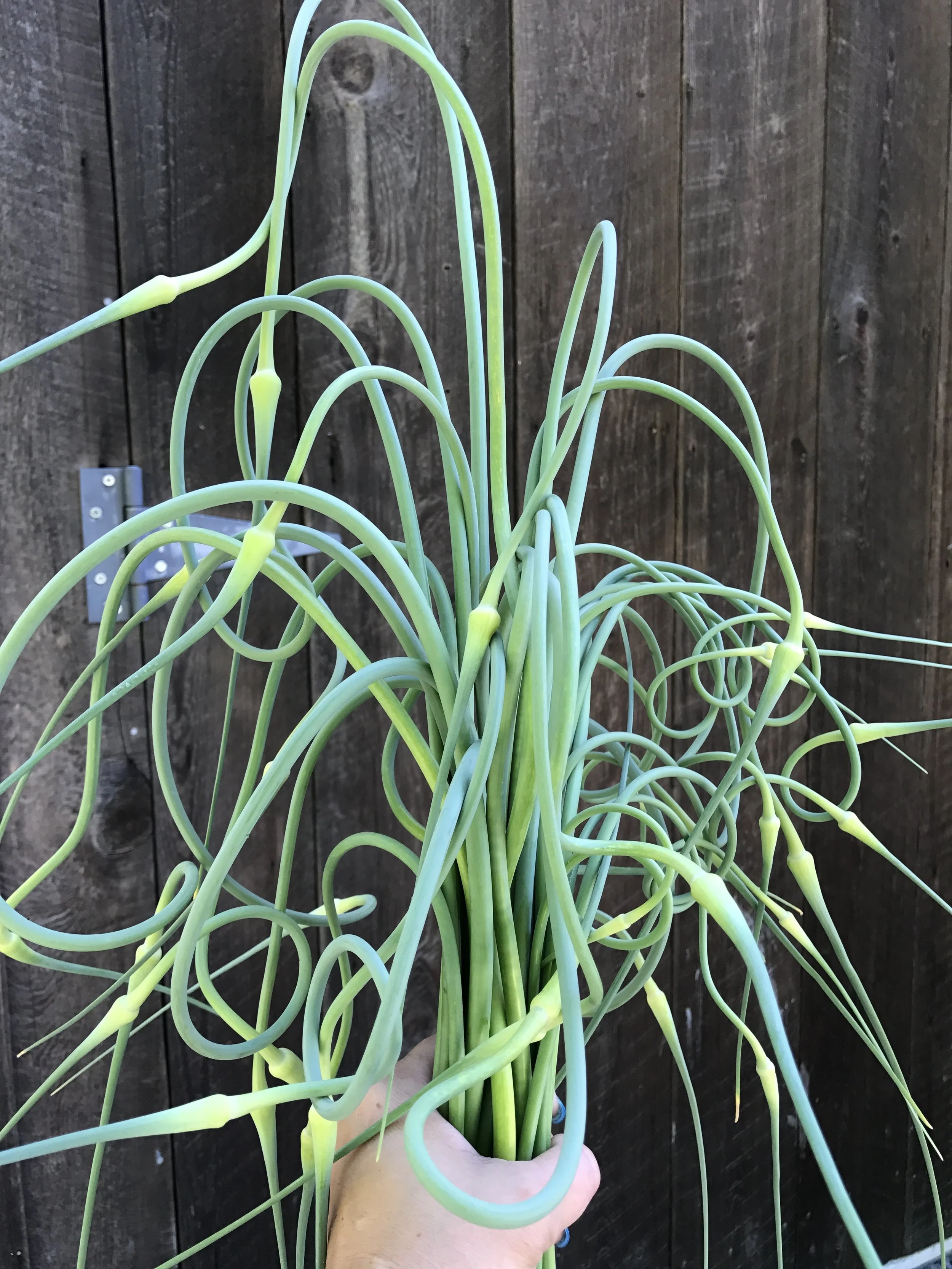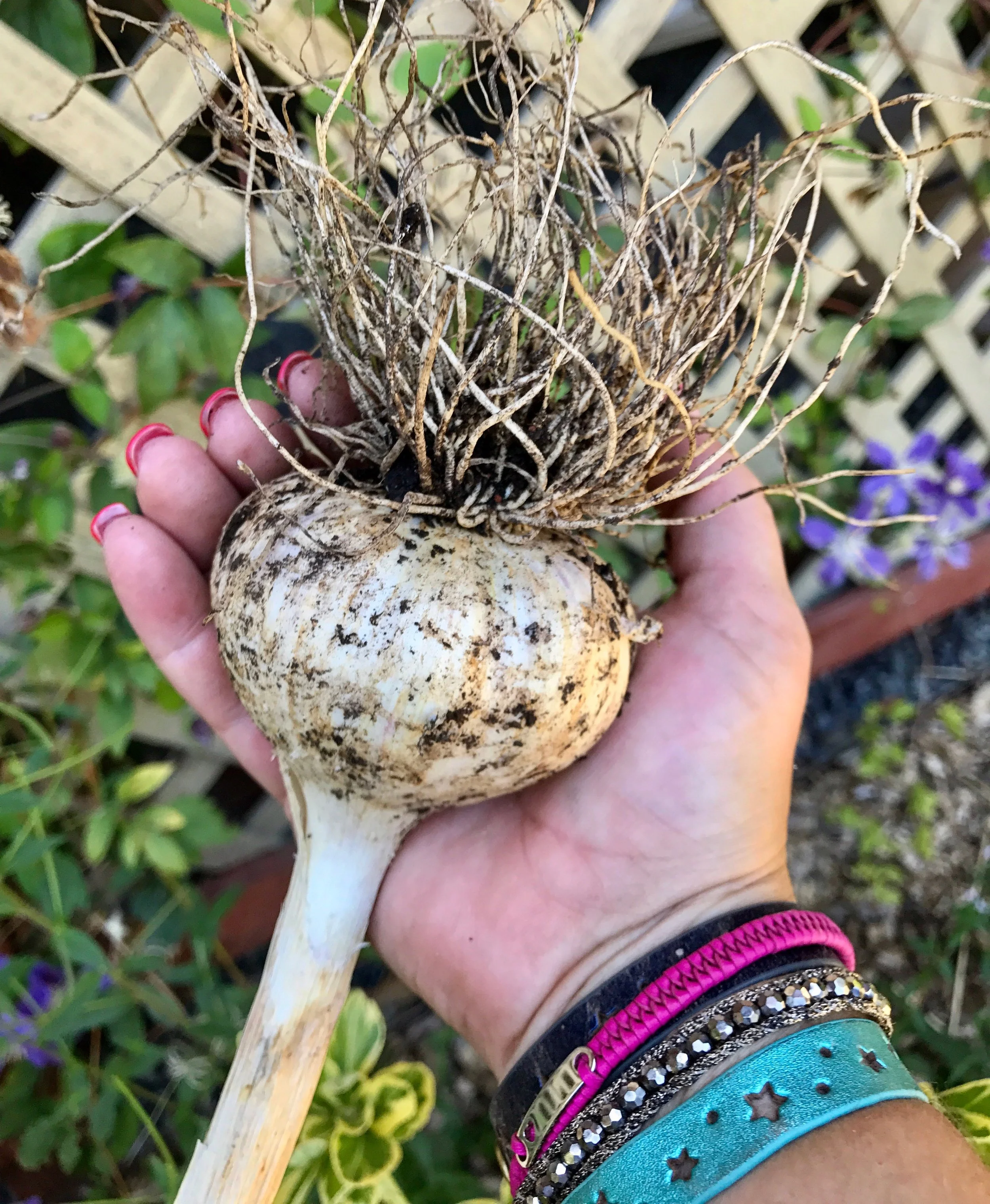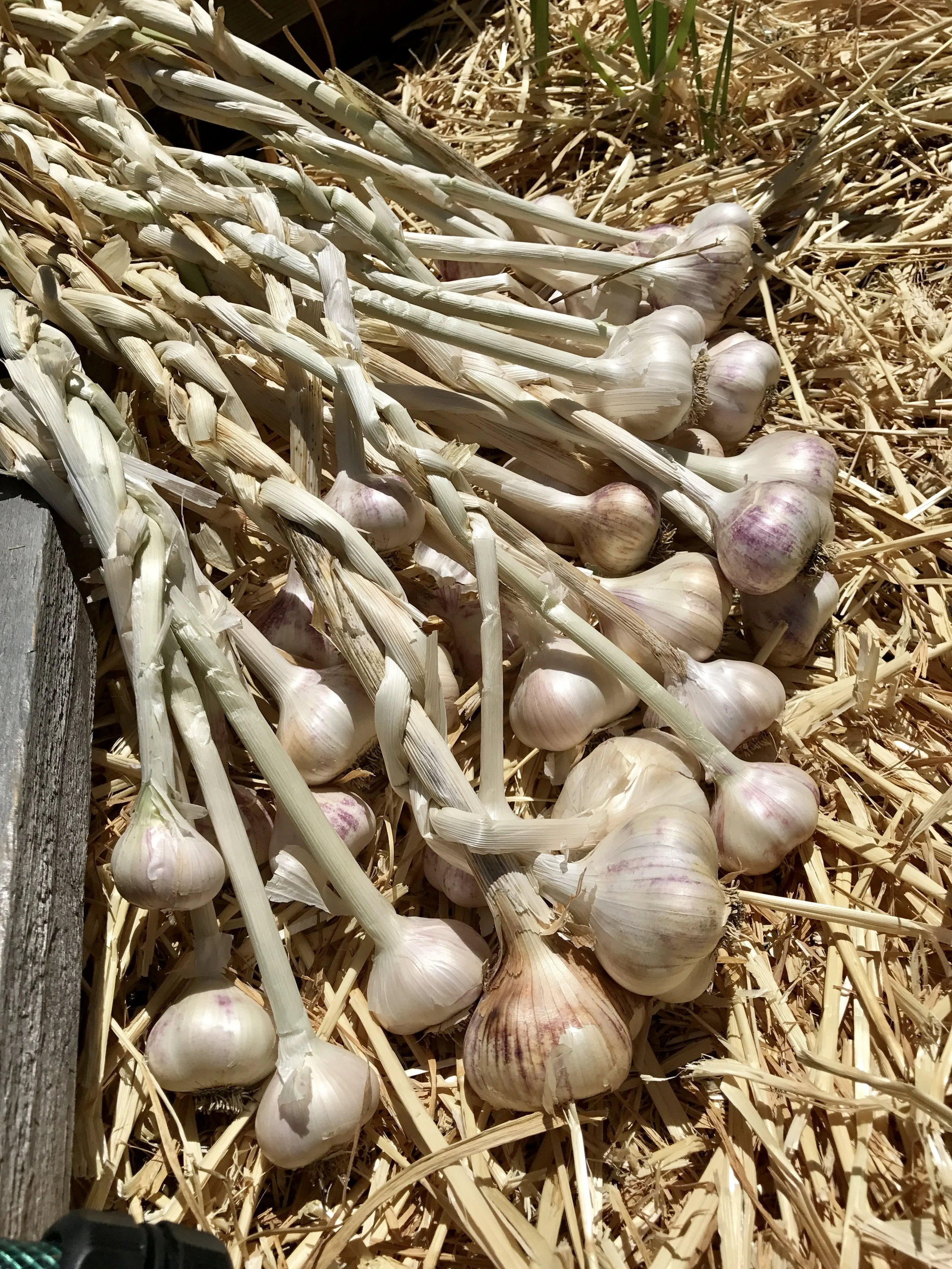As autumn settles in and thoughts turn to preparing the winter garden, don't forget to reserve a little space for garlic. It's a low-maintenance crop with a high reward in flavor. The ideal planting window falls between mid-October and November, allowing garlic to undergo the necessary cold period for proper bulb development, also known as vernalization. In West County, we have relatively mild winters, so to provide extra chilling time, make sure to place the bulbs in the fridge a couple of weeks before planting outdoors.
When shopping for garlic varieties, you will notice there are twomain types: hardneck and softneck. Hardneck garlic forms a firm central stalk called a scape, which grows straight from the center of the bulb and is surrounded by 4 to 10 large cloves. It's ideal for colder climates and often delivers more bold, complex flavors. Because of that central stalk, however, hardneck garlic is more prone to moisture seepage and generally stores for just 3 to 6 months.
One of the great perks of growing hardneck garlic is the edible scape; a curly green flower stalk that emerges in late spring. Cutting it off early encourages the plant to focus its energy on developing a larger bulb, and as a bonus, the scape is edible. In early spring, before basil season, garlic scape pesto is a bright, flavorful way to satisfy the need for something homegrown. Scapes have a mild, garlicky flavor and can also be chopped like green onions and tossed into stir-fries, eggs, pastas, or anything that needs a savory kick.
Softneck garlic is the type you see most often in the grocery stores, with 12-20 smaller cloves tightly packed together. This type stores well because each bulb is tightly packed together with 12-20 cloves. With more papery layers than hardneck, it keeps out moisture and can last anywhere from 6 to 10 months if kept in a cool, dark place.
Tips for growing well-formed garlic bulbs:
Break apart the bulb right before planting and choose the biggest, healthiest cloves (leave the papery skins on).
Plant cloves pointed side up about 2 inches deep and 4–6 inches apart in loose, well-drained soil. Garlic doesn't like to be soggy!
Mulch with straw or shredded leaves to protect the cloves and suppress weeds.
Garlic is low maintenance, but during our heavy rainfall, it sometimes suffers from rust, a fungal disease that shows up as orange spots on the leaves. A preventative organic spray before heavy rainfall with copper, sulfur, or biological fungicides can protect your crop before the spores take hold.
Some of my favorite varieties:
Chesnok Red (hardneck): Sweet and full-bodied, great for roasting.
Music (hardneck): Big cloves, intense flavor, reliable grower.
Inchelium Red (softneck): Mild, lingering flavor, great for braiding and storing.
California Early (softneck): Classic garlic taste, often used in commercial crops
If you've only used grocery store garlic, you're in for a surprise. Homegrown garlic is more pungent, more nuanced, and a little goes a long way. One clove can often replace two or three store-bought ones in recipes. Once you taste the difference, there's no going back, so get your garlic growing.
Happy Gardening!



